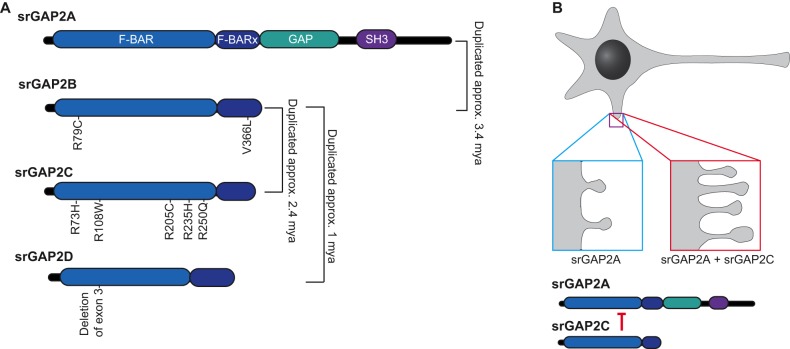Fig. 3.
Evolutionary history of srGAP2 paralogs. (A) srGAP2A, the ancestral form of srGAP2, contains an F-BAR domain, an extended F-BAR domain (F-BARx), a GAP domain and an SH3 domain. srGAP2A is an essential gene. srGAP2B arose as a partial duplication of srGAP2A ∼3.4 million years ago (mya), producing a protein that only contains the F-BAR and F-BARx domains. srGAP2B, in turn, duplicated ∼2.4 mya to produce srGAP2C and again ∼1 mya to produce srGAP2D. After these duplications, srGAP2B accumulated two nonsynonymous mutations (R79C, V366L), while srGAP2C accumulated five crucial nonsynonymous mutations (R73H, R108W, R205C, R235H, R250Q) that are important for antagonism of srGAP2A (Sporny et al., 2017). srGAP2D, likely a nonessential pseudogene, lacks the third exon, which normally encodes part of the F-BAR domain. (B) Non-human mammals express only the equivalent of human srGAP2A, and exhibit dendritic spines that are shorter and less numerous than in humans (blue box). In humans or in rodents that express exogenous srGAP2A and srGAP2C, srGAP2C inhibits srGAP2A, causing the dendritic spine necks to be longer, and the spines themselves to become more densely packed (red box).

